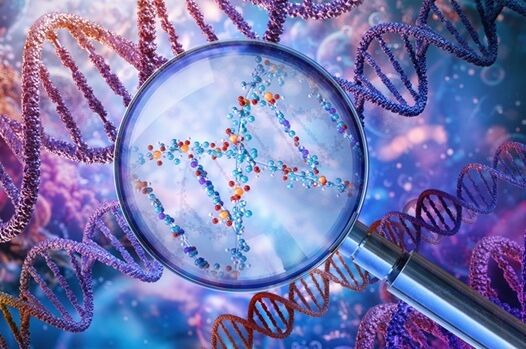Noah’s story: RNU5B-1-related disorder
Noah is 15 years old and from the Isle of Wight. In 2025 he was diagnosed with RNU5B-1-related disorder by the team at University Hospital Southampton NHS Foundation Trust, more than seven years after signing up to the 100,000 Genomes Project.

About RNU5B-1-related disorder
RNU5B-1-related disorder is a neurodevelopmental condition that was discovered in 2025 supported by data from the National Genomic Research Library.
It is associated with
developmental delays, weak muscle tone, larger-than-average head size, and poor growth.
Neurodevelopmental conditions
impact 2-5% of people worldwide.
Noah’s story

Shortly after Noah was born, his mother Maria Villa Vine noticed he was missing milestones compared to other children his age. This continued as Noah grew up, for example not walking until he was around 14 months. This prompted Maria to eventually see a paediatrician, who spotted a few physical traits that were likely to be linked to a genetic condition.
Following this, Noah was referred to his local NHS genetics department. During this time, he was also referred for an autism assessment, and at the age of 4 he was diagnosed with autistic traits.
Maria remembers: “The genetics department quickly identified a genetic change but they weren’t sure if that was the main thing contributing to Noah’s developmental delay or if there was something else behind it all.”
Challenges followed because of delays in Noah’s speech and communication, especially around his schooling and he needed a lot of extra support from teachers and teaching assistants.
In the search for answers, Noah was referred to the 100,000 Genomes Project, ran by Genomics England, when he was around 7 years old. Maria says: “There were certainly periods when we were desperate to know the cause of everything. We signed up because we thought it was a good idea and even if Noah didn’t get a diagnosis, he would still be helping others. We hoped that maybe one day we’d get an answer but at the same time we weren’t pinning all our hopes on it, especially as the years went on.”
Getting a diagnosis
Around 8 years after joining the 100,000 Genomes Project, Maria received a phone call telling her a diagnosis had been found for Noah. Maria recalls it being a bolt out of the blue and taking some time to process the news. Ultimately, it was an answer they were happy to have: “Knowing Noah’s identity and who he is was a big thing for us. It’s also nice to know that people never stopped looking for answers for Noah, even as the years ticked by. That’s something I would want families to know – just because you don’t have answers today doesn’t mean you should give up hope.”
Given how recently RNU5B-1-related disorder was discovered, there is still lots to know about the condition and how it impacts those affected. However, Maria is pleased to have this starting point and the opportunity to meet other families like her own.
Living with RNU5B-1-related disorder
Today, Noah is doing well and enjoys listening to 80s music, playing with his dog and is very sociable on his own terms. While a diagnosis has not changed any practical management of his condition, it opens the door for targeted research around it, research into future treatments, and answers for other families.
For this reason, Maria stresses the importance of research initiatives like the 100,000 Genomes Project: “We never would have known the genetic cause of Noah’s challenges if it wasn’t for the study. It shows how progressive research is and how scientists are finding new things all the time that can be totally life changing. We’re not searching for the missing piece of the jigsaw anymore.”
How whole genome sequencing can help those with RNU5B-1-related disorder
The condition’s discovery, aided by whole genome sequencing data, is a breakthrough that will benefit families all around the world with currently unsolved developmental cases. As recognition of the condition grows and more research is conducted, more families will be able to receive the answers they have spent years searching for, much like Noah’s family.